About tipper sounds
Tipper details
The Material
The material used has only a very limited influence on the sound. But it has quite an influence on how the tipper feels and how comfortable it is when you´re playing, and of course what it looks like.
The most suitable woods are:
Ebony, macassar, snakewood, cocobolo, pink ivory, beech, maple, ash, oak, bamboo, grenadilla, purple heart, coconut, walnut, yew, amaranth, and more.
Other materials that can be used are:
Carbon, aluminium, Plexiglas, copper, fibres and bristles, leather, wool, textiles, antlers, ivory, horn, and more.
As you can see, there is practically no limit to the choice of materials.
The shape of the tipper and its grip
Much the same applies to the tipper´s shape as to the material used:
it has little influence on the sound, but it´s important to comfort and feel when you´re playing.
The shape of the tipper has undergone major changes over the past few years. Whereas a few years ago, most players used short, thick, heavy tippers, some of which even had weights built into them, nowadays there is a preference for long, slim, very well-balanced tippers.
The head of the tipper
This is the feature that has the greatest influence on the sound!
Tipper heads and their influence on sound

Sharp edged profile - "Trumpet Head"
- Delivers a sharp attack to a small impact surface.
- Stimulates many natural vibrations in the drumhead, as there isn´t much chance of hitting an inert line
- But: slow frequencies are "cut off".
- Sound is clear, but may come across as cold and "tinny".
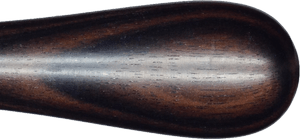
Large, round head
- Delivers less attack to a larger impact surface - increases the chances of hitting an inert line and stimulates less natural vibrations.
- Mainly excites slow frequencies (due to longer contact with the drum-head). But: rapid frequencies hardly have a chance.
- Sound is soft and warm, but may come across as „mushy".

"Tear Drop"
- A relatively small head with a relatively large impact surface.
- Delivers a good deal of attack, with the benefit of striking a larger area than, for instance, the "trumpet head".
- Its lightweight form is good for fast playing.
- Sound is "radiant" with a good proportion of low frequencies.

Ellipsoid
- A thin tipper head with a relatively large impact surface.
- Has the same advantages as the "tear drop", but brings more weight to bear. This increases the proportion of low frequencies excited.
- Hard, rigid woods such as snakewood, ebony and macassar make even very thin tippers highly resilient.
- Sound is "radiant" with a large proportion of low frequencies.
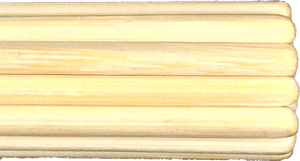
Hotrod
This design distributes the impact energy over a number of “small tippers” (dowels).
- Several small impact surfaces hit the drumhead simultaneously:
- Stimulating many natural frequencies
- Delivering more attack per point of impact than a single tipper with the same impact surface (in other words, you cover the same impact area, but spread over several points, meaning you need less contact with the skin and less playing effort
- Achieving a forceful effect, as the impact is reinforced by the dowels that follow.
- The tipper’s inherent noise is dominant!
- Sound: "fuller, warmer, more powerful, more tonal" with many active natural frequencies.
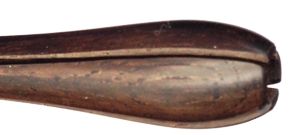
Split Tippers
- The tipper’s inherent noise is dominant (the click is louder than the skin attack sound).
- Overall sound depends heavily on the shape of the tipper head.
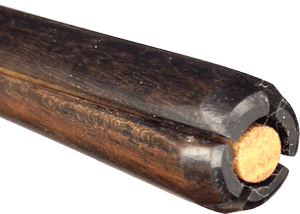
Special Mix: "Hi-Hat" (N-EF 2)
- This tipper has a characteristic sound (a click), but the skin attack sound can be heard clearly at the same time.
- This model can be regarded as a cross between a split tipper and a hot rod.
- The overall sound is very well-defined and powerful, without too much "clickery-clack"
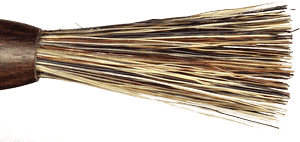
Brush/Bristle Tippers
- There is a natural "swish" sound, but the skin attack sound is more dominant.
- The volume of the "swish" sound depends on the type of bristles and on how much the bristles are spread apart. The overall sound depends on the shape of the tipper head as well as on the bristles.
- Special feature: natural tipper sound AND skin attack sound!

